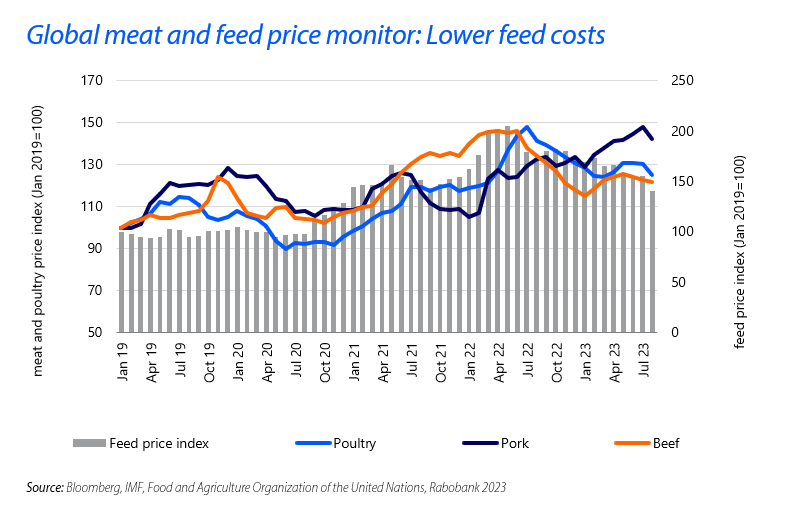



Improving demand and lower costs to support growth, despite volatile conditions
Global Poultry Report from RabobankA recent report by Rabobank reveals that the global poultry market is well positioned to gradually improve in the last quarter of 2023 and early 2024, following several months of slow growth. The main issues for 2023/24 include slow global economic growth, further declines in feed prices, and rising volatility risks due to avian influenza and El Niño.
Market conditions to remain highly price-driven
Lower feed costs are expected to support market growth, making poultry more affordable and helping industry growth to recover. “After a period of slow poultry consumption growth due to a weak global economy and rising prices resulting from cost increases, global demand has room for some recovery. This is driven mainly by lower feed costs and, therefore, lower chicken prices,” says Nan-Dirk Mulder, Senior Analyst – Animal Protein at Rabobank. “Poultry should be able to benefit from its relatively competitive pricing in many markets compared to other proteins like beef, pork, and alternative proteins.”

Brazil benefits from record global trade and shifting preferences
Global trade volumes peaked in the first half of 2023, reaching a record-high 7.2 million metric tons, driven entirely by increased trade of raw poultry meat. Meanwhile, trade in processed poultry meat dropped sharply. Amid more price-driven markets, consumers’ product preferences are changing, and this trend is expected to continue in the second half of this year and into 2024.
“Brazil – as a cost-price leader in raw chicken meat – benefited most from these bullish market conditions, expanding its exports by 16% in the first half of 2023 compared to last year,” explains Mulder.
Volatility expected to persist, with avian influenza (AI) as a major cause
Government interventions driven by food security, geopolitics, and sustainability will continue to impact markets and create volatility in global trade.
AI is expected to remain an important factor that could suddenly impact global markets, from both a local supply perspective and a trade perspective, especially if Brazil’s southern states are hit. “As AI is now present in most regions, new outbreaks will occur frequently, which often means temporary restrictions on global trade and shifts in trade flows,” says Mulder.
Cost-control and operational efficiency are key
According to Mulder, producers should maintain focus on the operational side. “Although we believe feed prices will drop slightly, operational costs are still at historic highs, and risks of further volatility exist in grain prices, due to El Niño, and in energy prices and availability. Ongoing leadership in terms of costs and procurement will remain key.”








